We must provide health plan members with culturally and linguistically relevant information about their well-being and health – tools that in turn encourage them to take a proactive and informed approach to improving their own well-being.
Medical terminology can feel – and read – as if it were its own fictional language.
Not surprisingly, nearly 9 in 10 adults struggle with health literacy.
According to the US National Library of Medicine, even people with high literacy skills may have low health literacy skills in some cases. For example, people who feel stressed and sick while accessing health information may have trouble remembering, understanding, and using that information.
This doesn’t even take into account that the elephant in the room can improve health literacy – language.
More than 25 million people in the United States have limited English proficiency (LEP) – a barrier that is particularly prevalent among people on Medicaid. More than 67.3 million Americans speak a language other than English at home.
But when patients and providers do not speak the same language, there can be negative knock-on effects on the health and well-being of individuals who are not proficient in English.
At baseline, patients with low health literacy or who are not proficient in English may not understand the importance of important, preventive services or how to care for their unique health needs. It can also lead to a general distrust of health care providers and can allow the spread of disinformation as individuals turn to unreliable (and potentially dangerous) sources of information, such as online influencers, among others.
So how do we begin to bridge this language gap?
Keep in mind that over 67 million people speak a language other than English in the comfort of their own homes. Providing important health information in the language patients speak is critical, and it’s something many health care providers and health plans are actively doing.
That’s a good start.
But truly improving personal health literacy for people with limited English skills is more than just multilingual insertion or plug-and-play “translation.” It’s about providing patients with cultural and language-relevant tools and resources to bridge gaps in health literacy and inspire confidence and self-efficacy.
It is important to use food as a tool and universal language for improving health literacy. Food preferences are deeply rooted in an individual’s cultural identity. This must be considered in order to effectively motivate and confidently motivate members to engage in their healthcare quality outcomes and improve their overall health literacy.
Food must be connected to a person’s culture and language to have a real impact on improving health literacy. We must provide individuals with culturally and linguistically relevant information about their well-being and health – tools that in turn encourage them to take proactive and informed approaches to improving their well-being.
Most importantly, customized educational resources are not only informative but also easy to understand, ensuring that everyone – regardless of their literacy level or primary language – can understand and benefit from the content. These resources inspire confidence and self-efficacy in people who have difficulty understanding their health due to language barriers.
Promoting health equity and improving health literacy is not just about translation, it’s about connecting people.
